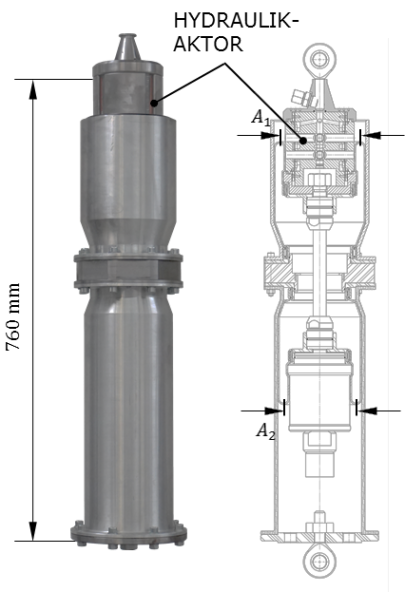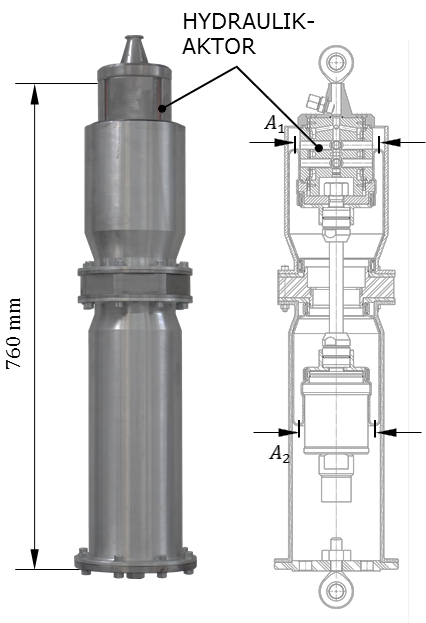The real and the virtual SFB demonstrator are used for applying the methods. In the latter case, the use of the real and the virtual system is coupled within a HiL environment. In the second part of the project, axiomatic data-driven and experience-based models are fused to investigate a resilient process chain represented by the hydraulic actuator of aLFD in production and use.
In general, passive, semi-active or active technologies are used to minimize or even compensate oscillations in mechanical systems, which are introduced by a kinematic base excitation for instance. Because of the functional separation of “load carrying” and “energy storing”, air springs are perfect to face uncertain loads, for instance by a level control. In order to manipulate the movement of the connected masses and to insulate them from the base excitation by applying additional axial force dynamically, we equipped an air spring with actuators. This approach is new because existing active suspension systems are not based on an air spring. The compact hydraulic actuators, which are integrated in the rolling pistons, adjust the load carrying area (pressure effective area) of the air spring with an edge frequency of approximately 5 Hz. Changing this area alters the axial force, which is almost a linear function of the load-carrying area. To increase the axial force applied and to decrease the energy consumption of the system by an energy recuperation, we developed an air spring with two adjustable rolling pistons. The load-carrying area of this air spring is a ring and therefore, small actuators displacements of only a few millimetres result in relatively great area changes of more than 30%.
Using the described hydraulic actuator as an example, methods are investigated which allow to make the process-life-phase-encompassing process chain more resilient. Models for the individual product life phases are set up and linked together to form a hybrid overall model of the system. The resulting resilient process chain is able to react adaptively to occurring disturbances and thus controls uncertainty during the product life cycle.
Video: Active Air Spring
Recommended external content
We have selected external content from YouTube for you and would like to show it to you right here. To do this, you must reveal it with one click. You can hide the external content at any time with another click.
I agree to external content from YouTube being shown to me. This may result in personal data being transmitted to third-party platforms. You can find more information in our Privacy Policy.
Subproject Managers
| Photo | Name |
|---|---|

| Prof. Dr.-Ing. Peter Pelz |




